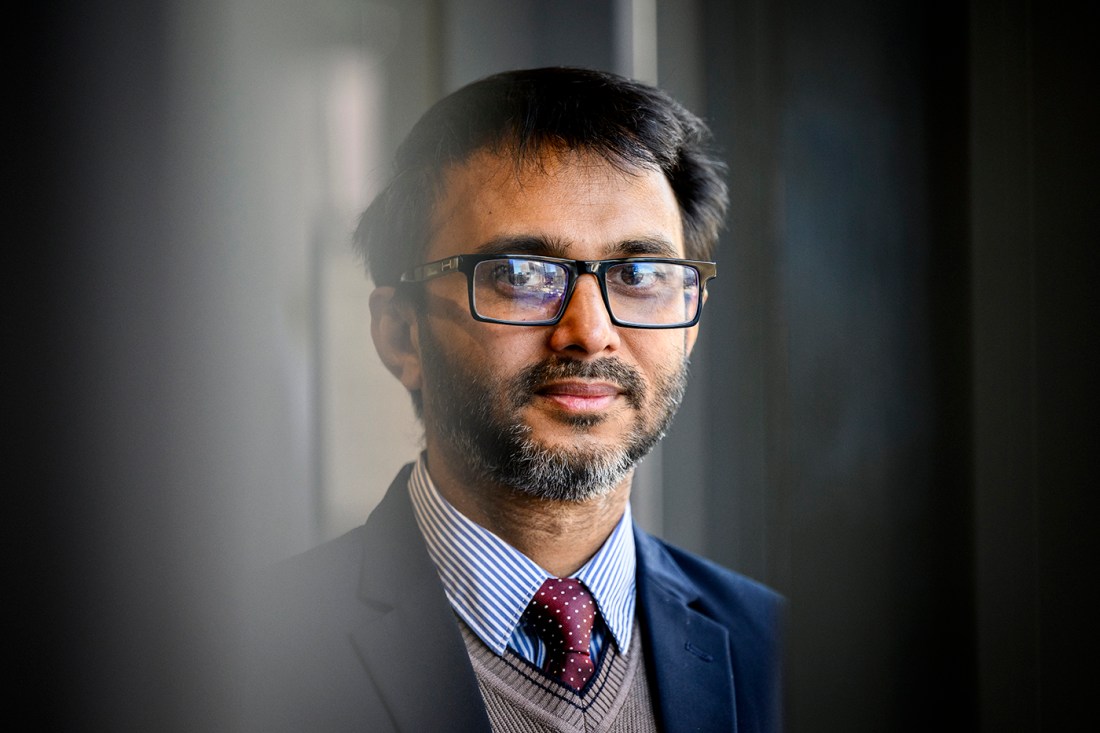Self-help groups boost success in opioid treatment, Northeastern research finds
The study found that when medication is combined with attendance at a support group, patients are over 25% more likely to finish addiction treatment.

In 2023, more than 84,000 people in the U.S. died from overdosing on opioids — everything from prescription painkillers to fentanyl to heroin.
That number declined in 2024, but the problem remains an epidemic, leading to over 81,000 deaths, according to the CDC’s National Center for Health Statistics.
Many more people — an estimated 2.5 million people in the U.S. — live with an addiction to opioids. There are medications that can help treat addiction, but many who start treatment don’t stick with it.
But what about the patients who do complete treatment? What was different for them?
That’s what Northeastern University researchers wanted to know when they tackled a massive national dataset of patients with opioid use disorder.
Using artificial intelligence to narrow the data down to a manageable size, researchers found that when medication is combined with attendance at a support group, patients are over 25% more likely to finish opioid addiction treatment.
“We know that medical treatment is very effective, but we also know that if someone prematurely discontinues the treatment, this person is going to be very vulnerable to overdosing,” says Muhammad Noor E Alam, at Northeastern professor of mechanical engineering and the lead investigator on the study.
“Our analysis creates evidence from U.S. data that if someone is going to participate in a self-help group while they are in treatment, that person is more likely to complete treatment,” he says.
The study, published in the International Journal of Medical Informatics, was supported by Alam’s National Science Foundation CAREER award. Other authors include Gary Young, director of Northeastern’s Center for Health Policy and Healthcare Research; Sahil Shikalgar, a Northeastern industrial engineering Ph.D. student; and Scott Weiner from Brigham and Women’s Hospital.

Alam and his colleagues sought to understand why some individuals undergoing treatment for opioid addiction experience greater success than others.
“We wanted to understand why premature discontinuation is happening and how we can design policies to improve treatment retention,” he said. “How can we use AI-based large-scale data analysis techniques to design better interventions?”
Separate studies show that taking drugs such as methadone or buprenorphine for 60 days reduces the risk of opioid overdose by 60%. But addiction treatment requires something more than persuasive outcome data. The support of others facing the same battle, under the guidance of a health professional, makes it more likely that patients will actually use the medications until treatment is complete, Alam said.
Northeastern researchers used patient data from 2015 to 2019 provided by the Substance Abuse and Mental Health Services Administration. Of 157,885 patients receiving opioid use treatment, the Northeastern study found that 49,058 attended self-help groups. More than half of those patients completed their medication treatment. Meanwhile, of those who did not attend self-help groups, only 19% completed treatment.
Editor’s Picks
In order to confirm the causal relationship between attending a self-help group and completing medication for opioid use disorder treatment, Northeastern researchers used AI to simplify the patient data set and remove all irrelevant details and features. They then matched patients who shared relevant characteristics — treatment setting, education level, socioeconomic status and psychological history — and isolated instances when support group attendance was the only missing element.
These findings are the latest in a series of studies by Northeastern researchers over recent years, offering data-driven solutions to tackle the opioid epidemic.
Alam and his team have developed AI models using Massachusetts health data to identify risk factors for opioid use disorder and treatment discontinuation, helping doctors tailor care and allocate resources more effectively.
The Northeastern research team previously proposed a data-driven framework to identify the best places for patients to dispose of unused prescription opioid pills and an incentive program to encourage patients to do so. The framework is meant to help reduce the amount of opioids that end up on the black market by linking pharmacies, clinics and other organizations.
“You have to go beyond machine learning to gain acceptance of your findings from health care professionals,” Alam said. “After leveraging the large-scale national data set with sophisticated techniques, we strongly believe that participation in self-help groups improves treatment retention.”











